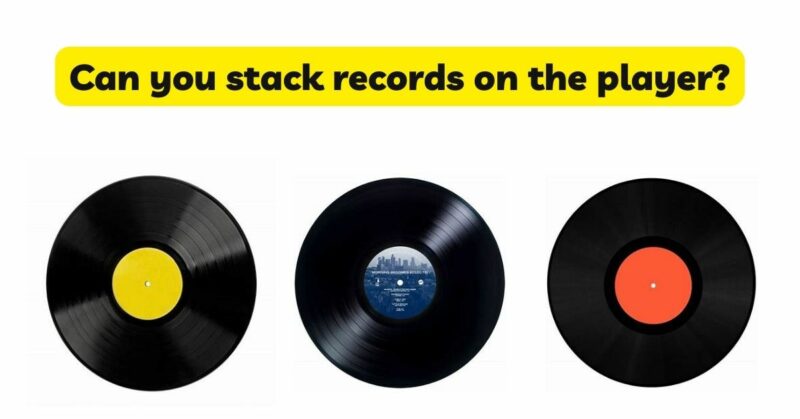As vinyl records continue to captivate music enthusiasts, questions arise regarding the practice of stacking records directly on a turntable. Some collectors may be tempted to stack records on the player for convenience or space-saving purposes. However, it is important to understand the risks and potential damage that can arise from this practice. In this article, we will explore the implications of stacking records on a turntable and discuss alternative storage options that prioritize the preservation and longevity of your vinyl collection.
The Risks of Stacking Records on a Turntable:
- Potential Damage to the Records: Stacking records on a turntable can expose them to various risks and potential damage. The weight and pressure exerted by the stacked records can cause them to shift, rub against each other, or scrape against the turntable’s surface. This can result in scratches, scuffs, or even warping, compromising the visual appeal and audio quality of the records.
- Impaired Performance and Sound Quality: The presence of stacked records on a turntable can impact the performance and sound quality during playback. The extra weight and uneven surface created by the stacked records can disrupt the balance of the turntable, affecting the tonearm’s ability to track the grooves accurately. This can result in skipping, jumping, or mistracking, leading to a compromised listening experience and reduced sound quality.
- Risk of Needle and Stylus Damage: The delicate nature of turntable needles and styluses is another concern when stacking records directly on the player. The stacked records can obstruct the needle’s path, increasing the risk of accidental contact and potential damage to the needle or stylus. This can result in bending, misalignment, or even breakage, necessitating costly repairs or replacements.
Alternative Storage Options:
- Vertical Storage: Vertical storage is the recommended method for preserving the integrity and longevity of vinyl records. By storing records vertically, you eliminate the risks associated with stacking on a turntable. Utilize dedicated vinyl record storage solutions such as shelves, crates, or storage units designed specifically for vinyl records. This method allows for easy access, reduces the risk of damage, and promotes better organization and preservation of your collection.
- Record Dividers and Organizers: To keep your vinyl collection organized and easily accessible, consider using record dividers or organizers. These dividers can be made of materials such as acrylic, wood, or metal and help maintain proper spacing between records. They provide additional support and stability, preventing leaning or toppling of the records and minimizing the risk of damage.
- Protective Sleeves and Inner Sleeves: Protective sleeves and inner sleeves are essential for safeguarding vinyl records from dust, scratches, and other potential damage. Outer sleeves provide an extra layer of defense against environmental factors, while acid-free inner sleeves reduce static and prevent surface scuffs. These protective measures help maintain the quality and longevity of your vinyl collection, regardless of where they are stored.
- Record Storage Boxes: Investing in record storage boxes or crates designed specifically for vinyl records is an excellent alternative to stacking records on a turntable. These boxes provide secure storage, protecting records from dust and providing a stable environment that minimizes the risk of damage. Look for boxes made from sturdy materials and ensure they provide proper support and cushioning for the records.
- Cleaning and Maintenance: Regular cleaning and maintenance are crucial for preserving the sound quality and longevity of your vinyl records. Dust and debris can cause surface damage and affect playback. Use a carbon fiber brush or a record cleaning kit to remove dust before each play. Implementing a regular cleaning routine helps maintain optimal sound quality and minimizes the risk of damage during playback.
Conclusion:
Stacking records directly on a turntable poses risks that can compromise the integrity and quality of your vinyl collection. The potential for damage to the records, impaired performance and sound quality, and the risk of needle and stylus damage make stacking an undesirable practice. To ensure the preservation and enjoyment of your vinyl records, it is recommended to explore alternative storage options such as vertical storage, record dividers, protective sleeves, record storage boxes, and regular cleaning and maintenance. By prioritizing proper storage techniques and handling your vinyl collection with care, you can maximize the lifespan and quality of your records, ultimately enhancing your listening experience for years to come.


